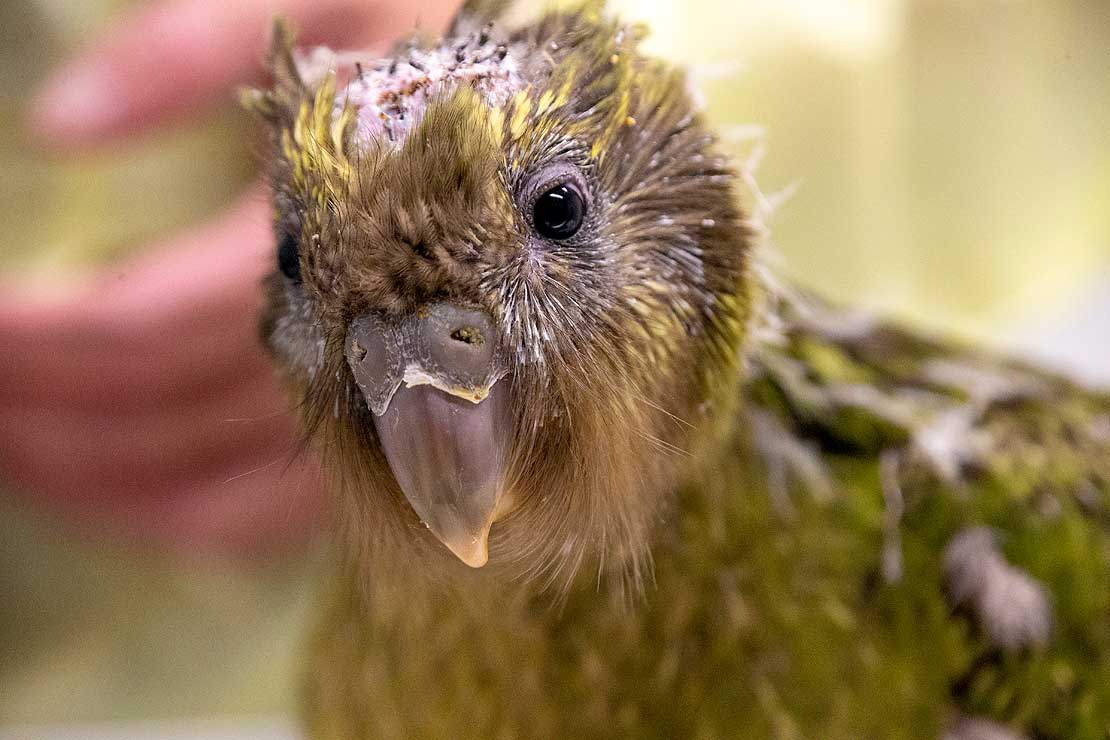To save the life-threatening owl parrot, New Zealand has planned an unprecedented bird brain surgery.
Recently, a wild base hospital in New Zealand completed the world's first bird brain surgery on an owl parrot that was just 56 days old. The parrot, named Espy 1B, suffers from rare skull abnormalities. At birth, its skull is not completely closed, and part of the brain tissue and dura are protruding from the skull "hole", separated from the outside world by only a thin layer of tissue. Once this layer of tissue is damaged, Espy 1B's brain will be severely traumatized and infected.

Postoperative recovery of the Owl Espy 1B image from Massey University
The gap between the skulls formed by the loose binding of the skull is often referred to as the fontanelle. The fontanelle in humans usually closes slowly after birth, but for birds, this step is usually done before hatching. As a result, Espy 1B is rare in birds.
According to the official website of Macy University in New Zealand, in order to save the parrot Espy 1B, on April 29, veterinarians from Auckland Zoo, Wellington Zoo and Dunedin Wildlife Hospital gathered at Macy University Wildlife Base Hospital. They decided to learn from treatment options in humans and other mammals to perform brain surgery on the Parrot Espy 1B.
Brett Gartrell, director of Wild Base Hospital and professor at Massey University, details the procedure in a video.
Brett Gartrell describes the procedure.
During the procedure, Brett Gartrell and staff carefully peeled off part of the parrot's brain skin to see if they could push the protruding piece of brain tissue back into the skull. But they found that the protruding part of the brain tissue was too thick and the pushback plan was blocked. Subsequently, Gartrell and colleagues chose to excise the protruding part of the brain and associated tissue, and then placed a reticulated graft on the owl's skull to act as a fixation and covering, a trampoline-like mesh that stretches the entire skull of the owl upwards to promote healing. Eventually, Brett Gartrell and colleagues injected bone marrow taken from the parrot into a mesh to narrow the skull crevices of its head.
During surgery Picture from Massey University
Postoperative photos Picture from Massey University
"If all goes well, it will live a happy and normal life," Brett Gartrell says in the video. According to Massey University, the Parrot Espy 1B recovered well after the operation and soon recovered into a healthy growing chick.
As for why this high-risk surgery was performed, Brett Gartrell explains, "We realized that this surgery was extremely risky, but there were only a few owl parrots left in the world, and each of them was valuable to the future of the race."
The Owl is a critically endangered bird, with only 147 adult parrots remaining. It is the only flightless parrot in the world, the "weight champion" among parrots. Cloaked in yellow-green feathers, the owl is nocturnal and herbivorous, and is known as the "Owl Parrot" because it has a face plate similar to that of an owl, and is endemic to New Zealand. An adult parrot ranges in length from 58 to 64 cm and weighs between 0.95 and 4 kg.
An adult owl named Sirocco, image from Wikipedia, photographed by Mike Bodie
An important cause of the parrot's endangerment is human activity. Unable to fly, parrots can easily become maori prey. In addition to being used as food, Maori people like to make capes and cloaks from the feathers of owl parrots. This type of cape is extremely valuable and has a good thermal effect.